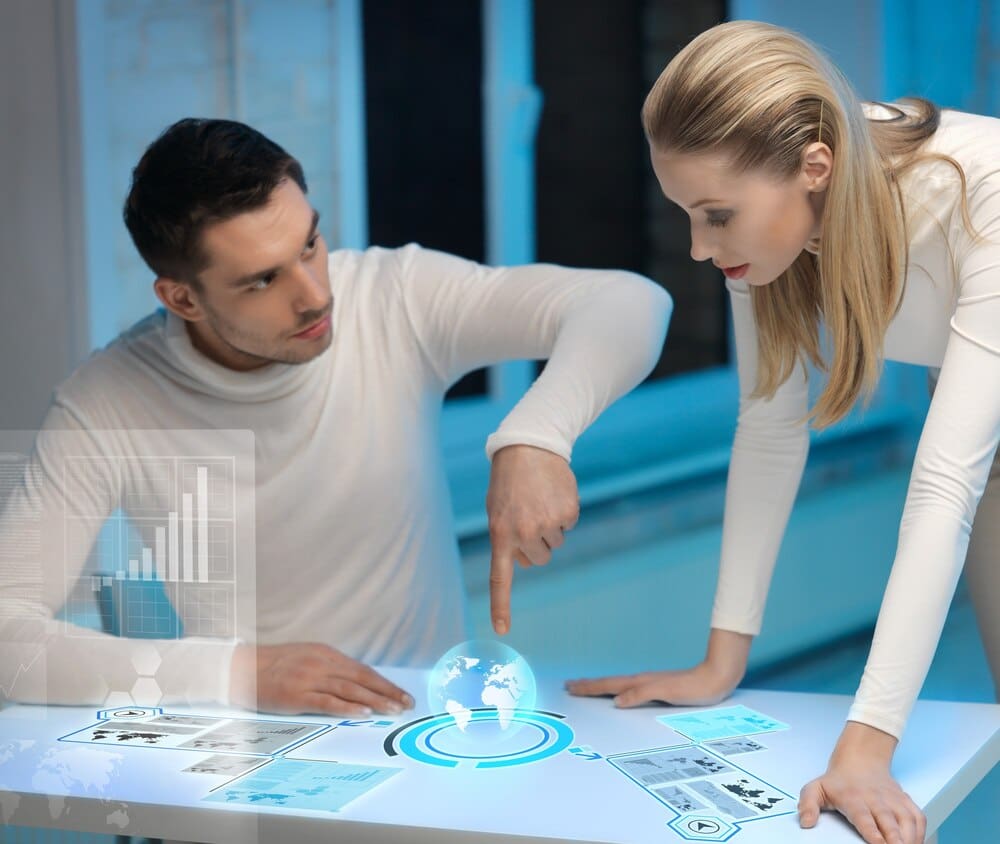The long-foretold future of artificial intelligence in the workplace is arriving, but it looks less like a hostile takeover and more like a strategic partnership. Across industries, from creative agencies to financial institutions, businesses are now implementing AI not merely to automate tasks, but to collaborate directly with human employees, augmenting their skills and amplifying their output. This paradigm shift, moving from automation to augmentation, is fundamentally reshaping job roles and creating a new model of productivity where human ingenuity is paired with machine intelligence to solve complex problems, drive innovation, and unlock unprecedented growth.
From Automation to Augmentation: A New Workplace Paradigm
For years, the dominant narrative surrounding AI in business centered on automation—the replacement of repetitive, rules-based human tasks with software. This led to widespread anxiety about job displacement, envisioning a future where machines rendered human workers obsolete. While automation remains a key function of AI, a more sophisticated and powerful model has emerged: augmentation.
Augmentation is not about replacing humans but enhancing their capabilities. In this model, AI acts as a “co-pilot” or a collaborative partner, handling the data-intensive, analytical, and repetitive aspects of a job. This frees up human professionals to focus on what they do best: strategic thinking, creative problem-solving, emotional intelligence, and complex ethical judgments.
This shift recognizes that the most valuable business outcomes are often born from a blend of computational power and human intuition. AI can process trillions of data points in seconds, but a human can interpret those findings within a broader business context, understand customer sentiment, and make a final, nuanced decision.
What Human-AI Collaboration Looks Like in Practice
The concept of a human-AI team is not theoretical; it’s actively being deployed across various business functions. These collaborations take different forms depending on the industry and the specific task at hand, but the core principle remains the same: leveraging the distinct strengths of both human and machine.
Marketing and Content Creation
In marketing departments, AI tools can analyze vast datasets to identify emerging consumer trends, predict campaign performance, and segment audiences with granular precision. A human marketer then uses these insights to craft the overarching creative strategy and brand messaging.
Generative AI platforms can brainstorm dozens of ad headlines or blog post ideas in seconds. The human writer or editor then refines the most promising options, infusing them with brand voice, emotional resonance, and a unique creative spark that AI alone cannot replicate.
Software Development and Engineering
The world of software development has been revolutionized by AI co-pilots like GitHub Copilot. These tools can suggest lines of code, complete entire functions, and identify potential bugs in real-time as a developer writes.
This collaboration dramatically accelerates the development cycle. The AI handles the boilerplate and repetitive coding, allowing the human developer to concentrate on higher-level system architecture, complex logic, and innovative feature design. The AI acts as a tireless pair programmer, boosting productivity without replacing the need for human oversight and architectural vision.
Customer Service and Support
In customer service, a tiered collaborative approach is becoming the standard. AI-powered chatbots handle initial customer inquiries, answering frequently asked questions and resolving simple issues 24/7. This provides instant support and filters the queue for human agents.
When a customer’s issue is too complex, emotionally charged, or requires a creative solution, the AI seamlessly escalates the conversation to a human agent. The agent receives a full transcript and summary from the AI, allowing them to step in with context and provide the empathetic, high-touch support that builds customer loyalty.
Finance and Analytics
Financial analysts are leveraging AI to sift through market data, financial reports, and news feeds to detect anomalies and identify potential investment opportunities or risks. The AI excels at pattern recognition on a massive scale, flagging insights a human might miss.
The human analyst then investigates these AI-generated leads, applying their deep industry knowledge, understanding of geopolitical factors, and strategic judgment to make the final call. This partnership combines the speed of machine analysis with the wisdom of human experience.
The Core Benefits of a Collaborative AI Model
Adopting a human-AI collaborative framework offers businesses a powerful competitive advantage. The benefits extend beyond simple efficiency gains, touching every aspect of organizational performance.
First and foremost is the dramatic boost in productivity and efficiency. By offloading time-consuming tasks to AI, employees can dedicate more of their time to high-value strategic work. This not only increases output but also improves the quality of that output.
Second, this model leads to improved decision-making. AI provides data-driven, unbiased insights that form a solid foundation for decisions. Humans layer this with context, ethical considerations, and strategic foresight, resulting in choices that are both analytically sound and strategically wise.
Third, human-AI collaboration is a powerful engine for innovation. AI can serve as a brainstorming partner, generating novel ideas or identifying unexpected connections in data. This can spark human creativity, leading to breakthroughs in product development, marketing strategies, and business models.
Finally, and perhaps counterintuitively, it can lead to increased employee engagement. When employees are freed from mundane work and empowered to focus on more challenging and creative tasks, job satisfaction often increases. It also fosters a culture of continuous learning as employees develop new skills in working alongside intelligent systems.
Navigating the Challenges of Implementation
While the promise of human-AI collaboration is immense, the path to successful implementation is not without its challenges. Leaders must be proactive in addressing potential hurdles.
The most significant challenge is often the skills gap and the need for training. Employees must learn how to effectively prompt, guide, and interpret the output of AI systems. This requires a strategic investment in upskilling and reskilling programs focused on “AI literacy” and collaborative workflows.
Another key concern is building trust and overcoming resistance. Employees may be skeptical of AI or fear it will devalue their contributions. Leaders must foster a culture of transparency, clearly communicating the goals of AI implementation and emphasizing its role as a supportive tool, not a replacement.
Finally, technical hurdles around integration and data governance must be managed. Integrating new AI tools with existing legacy systems can be complex. Furthermore, robust frameworks for data privacy, security, and ethical AI use are essential to maintain trust with both employees and customers.
Conclusion: The Future is a Partnership
The narrative of “man versus machine” is an outdated relic of science fiction. In the real world of modern business, the future of productivity is being built on a foundation of “man with machine.” Human-AI collaboration is not a distant concept; it is a practical and powerful strategy that is already delivering tangible results. By augmenting human talent with the analytical power of AI, companies can create a workplace that is more efficient, innovative, and ultimately, more human. The organizations that successfully cultivate this symbiotic partnership will be the ones to lead their industries in the years to come.








